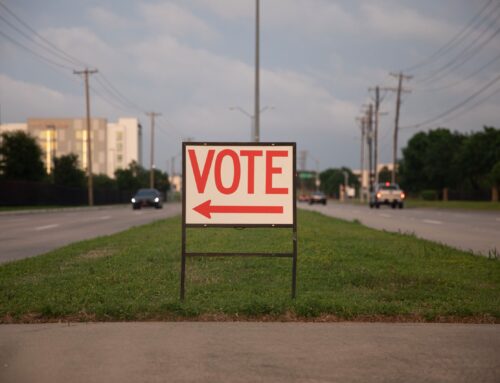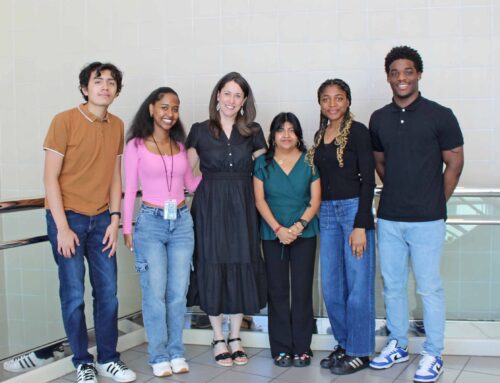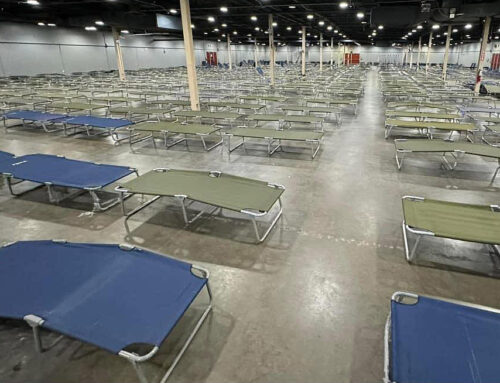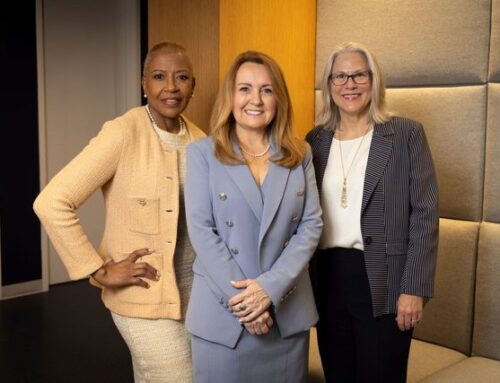
Police mobile unit parked at Forest Audelia, days before a high school student was shot and killed there.
It is not a fair question. Our crime problems are complex, and our efforts and progress should not be ignored.
An article on The Atlantic’s City Lab about crime in Chicago, written last year but still very pertinent, reminded me of what we are experiencing in the Lake Highlands area of Dallas. See if this sounds familiar:
Gun violence in Chicago is endemic. A recent shooting on the rough side of town injured several people, including a child, which made headlines. A series of incidents last week resulted in more injuries and headlines.
“Such stories lead to a sense of a city under assault. In fact, it’s not the city as a whole, but particular neighborhoods. Violence … is concentrated in particular neighborhoods that are defined by income and race.”
Lake Highlands, like Chicago, often makes headlines in association with violence. Two examples over the last week include: “In one of Dallas’ roughest neighborhoods, a boy shot dead.” The other, “Man fatally shot after argument in Lake Highlands.”
Just like one cannot ask, “How dangerous is Chicago?” and expect to get a useful answer, one cannot ask, “How dangerous is Lake Highlands?” and expect one answer.
The expert in the Atlantic’s story is a grad student who studies the distribution of violence. He answers the question, “How dangerous is Chicago?” the same way an expert might answer the question “How dangerous is Lake Highlands?”:
“The answer really depends on where you are, and also on who you are. You can be in the same neighborhood and depending on whether you’re a man or a woman or younger or older or white or black or Hispanic, your chances of being victimized by violent crime could be totally different.”
He goes on to say that the city as a whole is less dangerous than it was years ago. We could say the same for Northeast Dallas (because Lake Highlands is not a municipality and does not have official borders, Northeast Dallas is about the closest we can get using the actual data available).
He goes on to talk about what has gotten worse in Chicago, which is the inequality of violence.
“It’s always been unequal. Everybody who lives in Chicago or knows anything about Chicago knows that there’s a big gap in many indicators of quality of life, broadly speaking between richer neighborhoods on the North Side and poorer neighborhoods on the South and West Side, and has been for a very long time. But that gap in terms of violent crime has gotten much, much worse. In the early ’90s, the most dangerous part of the city had about six times as many homicides as the safest third of the city. Today that number is about 15 times. … your chance of being victimized by violent crime (is) much bigger if you live or spend lots of time in violent neighborhoods than it was 20 years ago.”
An interesting dynamic in Chicago that the article points out is that when Chicago’s violent crime starts making headlines, residents of the safe neighborhoods panic, even though statistically speaking they are safer than ever. Then they demand more police presence for their safe neighborhoods, effectively removing some of the resources from the dangerous neighborhoods. They allow some scary headlines to blind them to what actually is happening — the communal fear apparently can cause rash reactions that wind up being counterproductive.
Here in Lake Highlands, both our northeast police force and most of us who have been around a while have a better collective understanding of crime and its nuances, I hope. (We become frustrated when reporters call Lake Highlands “one of Dallas’ roughest neighborhoods” because they obviously don’t get it or care to convey it.) Police apply extra pressure to high-crime areas and sufficiently ignore the safer neighborhoods (that is a quip, but with a hint of truth). A mobile police unit was stationed in the Forest-Audelia parking lot the entire week leading up to the shooting of a high schooler.
We understand that Lake Highlands as a whole — outside of the hot spots — is not under assault and that crime is highly concentrated. Not only that, but many in Lake Highlands dedicate time and resources to addressing the actual issues, which lie at the heart of those high-crime communities within our community. Most of the families who live there are good, hardworking people forced by finances to live in a dangerous area. Many efforts are geared toward empowering and rallying them to make a stand against crime within their own smaller communities, which would eventually result in safer neighborhoods all over Lake Highlands and less violence inequality.
As one neighbor who is involved in multiple efforts to improve the quality of life for our area’s poverty-affected families put it, we need to think of the people living in these areas as “us,” not “them.” Councilman Jerry Allen expressed a similar thought when we spoke about poverty:
“Once people start seeing we are all in this together, we can get on our way to living in a safe, clean, more enriching neighborhood, which is what every family wants.”
Volunteer efforts by churches and nonprofits are chipping away at the problems, resident activists have influenced positive improvements and, along with our district 10 councilman, thwarted undesirable and predatory businesses. For just a few examples, see our stories about The New Room, Kids-U, LifeNet, selfless teachers, mentoring programs and amazing students who call high-crime apartment communities home. Understanding the culture of poverty also is productive for all.
It can be tough to hold our heads high when these violent headlines emerge. The death of a teenage boy on our streets is horrifying, but the event, and the media-induced hysteria surrounding it, does not accurately tell our story. With our abundance of dense zoning, we have more than our fair share of challenges, but the violent events are symptoms of deep-rooted emotional and structural issues that are not exclusive to Lake Highlands. Chicago, Dallas, Lakewood, Oak Cliff and urban areas worldwide deal with the same issues, and if you take a good look at the evidence, you will see we are handling them relatively well.





